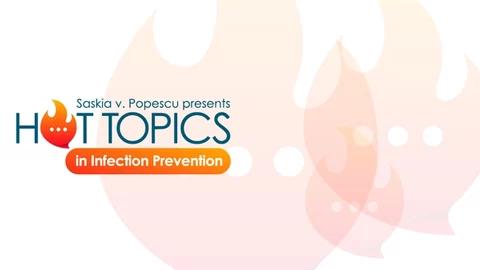Hot Topics in IPC for February 12, 2025: Public Health Policy, Influenza Season, and More
This Hot Topics in IPC updates you on the US Public Health Policy, Influenza, and so much more!
Hot Topics in Infection Prevention

US Public Health Policy
Last week saw the announcement of a new rule for the National Institutes of Health, capping grant indirect costs to 15% - historically, these have been around 40%, with some as high as 75%. As of early this week, a federal judge paused such plans. “The action is in response to lawsuits filed by 22 US states and a coalition of universities earlier today contending that the policy was illegal and would cause “cutting-edge work to cure and treat human disease” to “grind to a halt”.
A federal judge has ordered health agencies to restore websites and data taken down via President Trump’s Executive Orders (EO). Will Stone of NPR notes that “the temporary restraining order was granted in response to a lawsuit filed against the federal government by Doctors for America (DFA), a progressive advocacy group representing physicians, and the nonprofit Public Citizen, a consumer advocacy group.”
US Influenza (Flu) Season
The US is experiencing a significant flu season—with the latest CDC influenza surveillance data report noting that clinical lab positivity for the week ending Feb 1,2025, is 31.6% (an increase from previous weeks), an increasing trend of 7.8%of visits to health care providers due to respiratory illness, and a 2% increase of influenza-attributed deaths. This increase is nationwide and considered the most severe flu season in the past 15 years. With the data pointing to increasing trends across the board, it’s very likely we haven’t seen the peak yet.
H5N1 Updates
The latest update from the Animal and Plant Health Inspection Service is an agency of the United States Department of Agriculture (confirmed 5 additional H5N1 infected herds, bringing the total to 744 in California and 967 across the US (16 states total). This week, Nevada announced an infection in a dairy farm worker, which has fueled even more concern around genomic sequencing of cases (both human and animal) for close monitoring of transmission and evolutionary changes.
In addition to the human case, Nevada also shared a newer variant that was identified in cattle – the D1.1. genotype, the strain primarily identified in wild birds, whereas the previous cases of H5N1 in Nevada dairy cows have been B3.13. How the spillover from birds into cows occurred is still being assessed. The concern is, of course, a lackluster response since the outbreak began in 2024, compounded by health agencies in a state of blackout.
If you’ve got folks asking about the safety of eating eggs right now, here's a great article.
Uncovering a Hidden Risk: Alcohol Use Disorder Significantly Increases C difficile Infection Rates
April 10th 2025A groundbreaking study reveals a strong connection between alcohol use disorder and increased risk for Clostridioides difficile infection, challenging traditional assumptions and calling for enhanced infection prevention protocols.